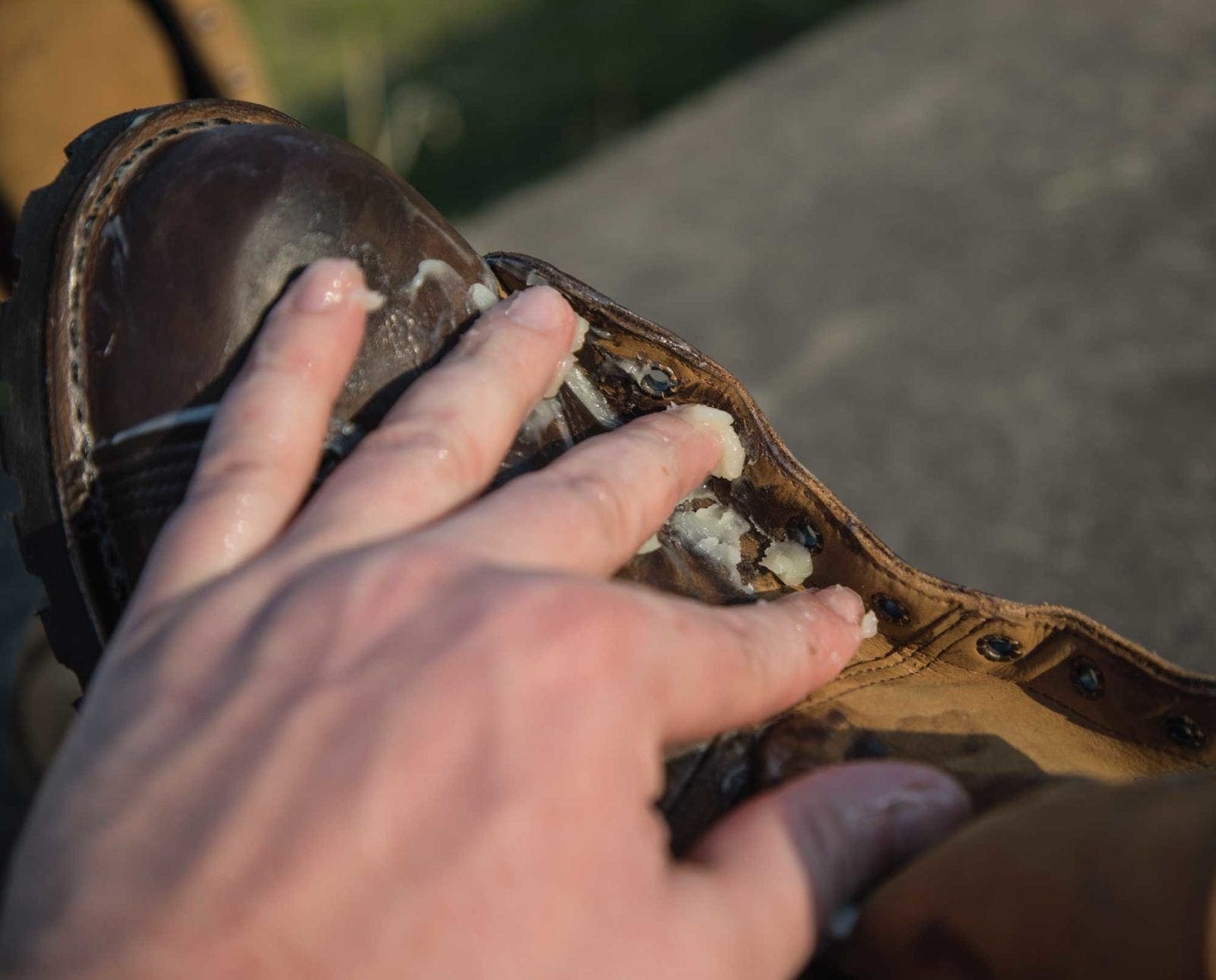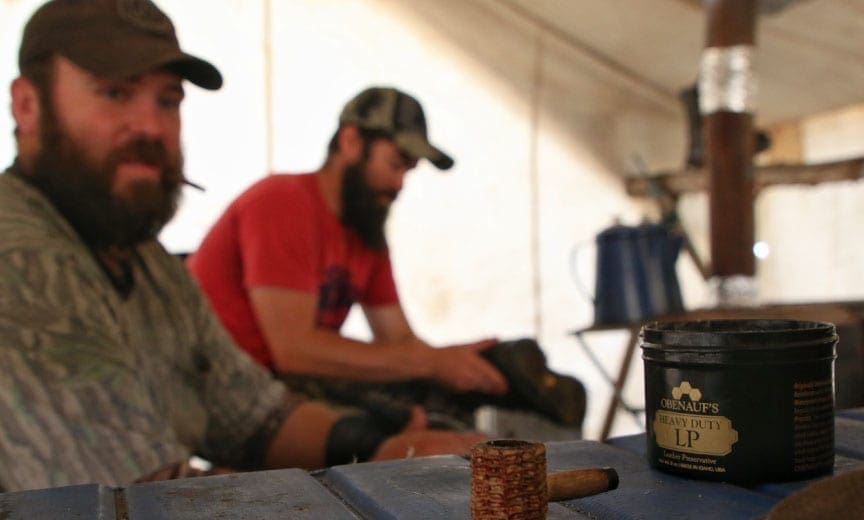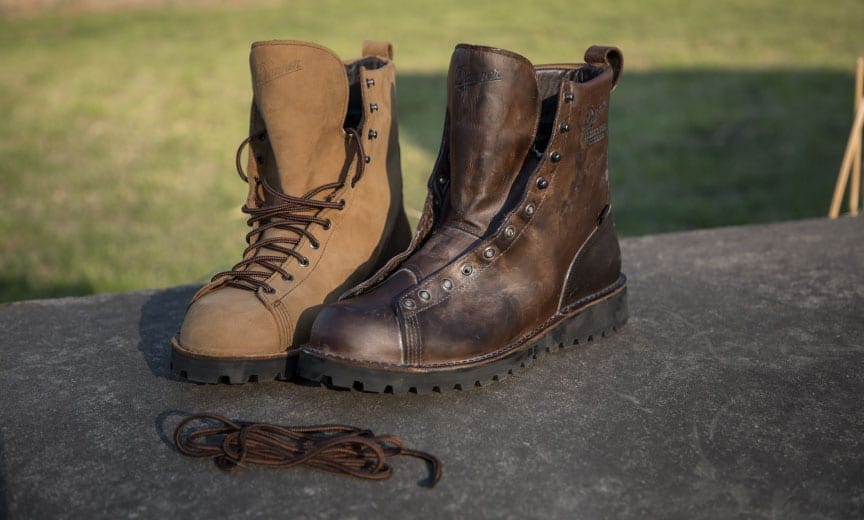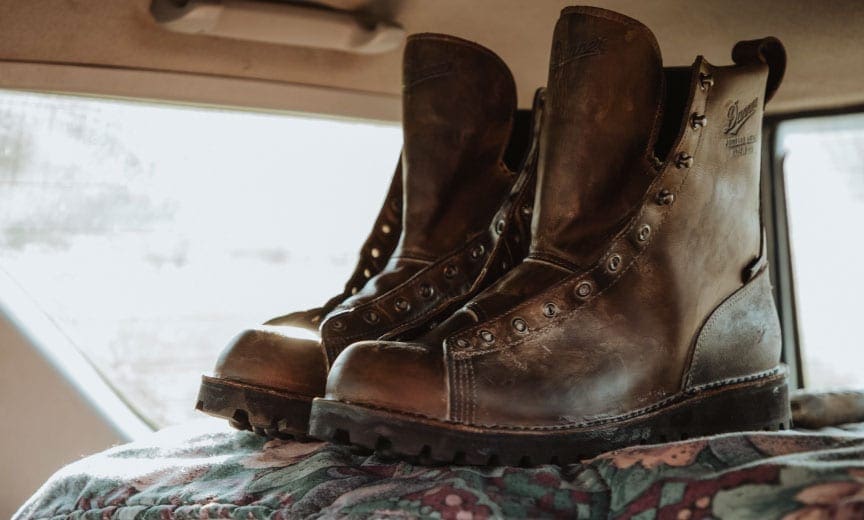Home » Hunting Gear » Off-Season Maintenance for Leather Hunting Boots
Off-Season Maintenance for Leather Hunting Boots

A life-long hunting, shooting and motorsports enthusiast, Zachary Hein grew…
A How-to Guide on Keeping Your Leather Hunting Boots in Working Order for the Long Haul
In a typical year, mid-spring is about the time I get stressed out from lack of progress on my honey-do list. Between a busy work schedule, our five-acre homestead and a few heavily-anticipated personal vacations, my mostly neglected list of to-dos grows a mile long.
Enter the global pandemic and a stay-at-home order — travel schedule cleared, Viva Las Vegas cancelled, and 90 minute per day commute vaporized. At three weeks in, I’d never gotten so much done. Fruit trees pruned, vehicle maintenance and upgrades completed and umpteen little things that had been nagging at me all winter were sorted.
I’d also never bought so much camping and hunting gear online in one month, but that’s beside the point. (How have I survived 35 years without a Lavvu?!?)
On a fine spring day I tackled a task that had been nagging at me for months — treating my leather hunting boots. It never fails that I put away a pair of boots in February and they get neglected until September, when I pull them out and realize I’ve done wrong. Not a glamorous job, but it’s necessary.
The worst thing that can happen to a pair of leather boots is to get put away muddy. As that mud dries, it starts leeching the life out of the leather, sucking the oils and moisture out of the boot and speeding its demise.
Here’s a quick how-to on revitalizing a set of leather boots:
Start with Clean Boot Leather
If it’s a set of boots that have been used before, pull out the laces and break out the saddle soap, a little hot water and a soft-bristled brush to get all the dirt and grime off of and out of the leather, seams, and stitching. Detritus loves to hide in the crevices where two pieces of leather meet, so try to flush and brush out all grit. After washing, let the boots dry a bit — damp is OK but wet is not.
Extra Tip: Pay special attention to the folds underneath the eyelets where the quarter rests over the gusset/tongue. They tend to gather dirt and chaff and pack it into a hard cake over time.
I cheated and started with a brand new pair of Danner Elk Hunters, so I happily get to skip this step.
Pick a Quality Leather Treatment Product
I’m a devotee of Obenauf’s. I use their Heavy Duty LP for hunting boots that get hard use and plenty of exposure to snow, rain and mud. For lighter use leather goods like hiking boots, motorcycle gear, gloves, slings and ammo pouches, I use their Leather Oil.
I’ll be the first to admit I’ve only tried a handful of leather treatment products, but when I got turned on to Obenauf’s, that’s all she wrote. It’s a staple in the wildland firefighting world, is beeswax/propolis-based and smells phenomenal — which is a definite plus.
Warm the Leather
It doesn’t need to be hot, but warm leather soaks up that oily goodness faster. The boots could be set in the sun, put on a Peet dryer, or perched on a heat register. The worst I’ve ever done is stick a pair under a rickety wood-burning camp stove on an elk hunt, gambling that I wouldn’t toast them too badly before I noticed they were dry enough for treatment. If they start smoking, that’s a bad thing, apparently.

Work the Product in Methodically
Pick a starting point and work your way around the boot, paying special attention to seams and stitching, working the product in according to the manufacturer’s directions. With a natural product like the Heavy Duty LP, that means letting the warmth of your hands melt the wax and oil as you apply it with your fingers.

Extra Tip: Let the boot tell you where it needs more treatment. After an even application, the areas that are starving for oil will suck it down, while other areas that aren’t as depleted will soak it in more slowly. Re-apply where the boot is asking for it and don’t forget those folds on the sides of the gusset!
Rest and Repeat
Let the boot sit in a warm place and soak in the product. Reapply as you see fit. Sometimes a boot only needs one application to get it back in top form, but for new boots like these Danners, I’ll most likely hit them three times before calling it quits.

Extra Tip: My favorite method is to put them in a dark-colored car on a sunny day with the windows cracked. For one, the heat is even and not too hot. Second, the boots aren’t drying out too much like they could with forced air or intense direct heat. The goal is for oils to be retained in the leather, not baked out.
I started out on that fine spring day to treat several sets of boots, but only got through one pair before I threw in the towel. It was early summer with a stay-at-home order in place, so there was no use in getting them all done at once. I mean, what else would I have to do for the next few weeks/months/years?
Parting Tip: Don’t forget to break in a new pair of boots before your first hunt in them. Only time will tell if I remember to do that with these Elk Hunters…
A life-long hunting, shooting and motorsports enthusiast, Zachary Hein grew up on the plains of western Kansas chasing pheasants, quail and deer. Still based in the sunflower state, he works in marketing for CZ-USA and tours the midwest and beyond with his motley menagerie of mutts and a small fleet of overland-equipped Toyotas.




What do you think of mink oil? I heat it in a pan of boiling water to liquefy it before applying. I also set my oven on warm and put the boots in it to warm them